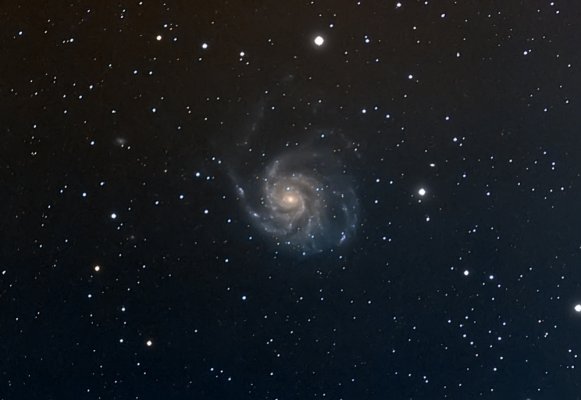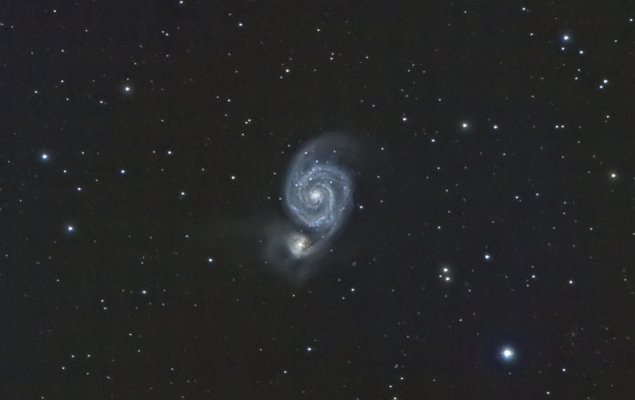You are using an out of date browser. It may not display this or other websites correctly.
You should upgrade or use an alternative browser.
You should upgrade or use an alternative browser.
Astrophotography: Deep Sky Objects
- Thread starter fort384
- Start date
The friendliest place on the web for anyone with an interest in aquariums or fish keeping!
If you have answers, please help by responding to the unanswered posts.
If you have answers, please help by responding to the unanswered posts.
Yes - it is a major problem and limits our overall exposure time on sub exposures. We can combat it on some types of objects by using a light pollution filter in our optical train but generally we don't use it as a rule. Without it we can expose a sub frame for about 10 minutes before the LP is an issue. Of course if the scope is pointed more SE towards Chicago, it might be further limited. The image above of the Pleiades which I took last night is pretty low in the eastern sky for us right now so my sub exposures were limited to 6 minutes each. The shorter exposure time probably resulted in less visible reflection nebulae in the image but that is always the trade.
If you are interested about our setup, hardware, and software, there is a write up about it on our website - http://www.claustonberryobservatory.com
If you are interested about our setup, hardware, and software, there is a write up about it on our website - http://www.claustonberryobservatory.com
Brilliant_Barbs_21
Aquarium Advice FINatic
All of these are literally amazing. 
butterfly_koi
Aquarium Advice Addict
Did you get any of the Eclipse tonight?
Kittykat364
Aquarium Advice Freak
- Joined
- Nov 22, 2013
- Messages
- 443
Wow these pictures are beautiful! I went to the country for a few days, wow is it a change from the city! You could see so many stars it was beautiful! I wish I had a camera like yours, my phone can't see the stars, it just gets black pictures.
Macscale
Aquarium Advice Addict
Absolutely amazing.. Even more spectacular that the camera used for some was a canon 1100d (T3 for the U.S.) The old pictures at least..
A while back I looked at purchasing the 60D-A, made solely for astrophotography, but then I figure the use for macros on my tanks or family portraits wouldn't be there. I just went with the 700d (T5I)..
A while back I looked at purchasing the 60D-A, made solely for astrophotography, but then I figure the use for macros on my tanks or family portraits wouldn't be there. I just went with the 700d (T5I)..


Thanks all. Here are a couple new ones... M101 the Pinwheel Galaxy and M51 the Whirlpool galaxy.
These are the first two pics with the new SBIG mono CCD camera which is made for astrophotography. This represents a pretty significant upgrade in equipment. Also have a new imaging scope.
The 60Da you mentioned is a great camera. If interested you can modify your own camera to be even better than the 60Da for astrophotography. You can remove the internal IR cut filter and just use an external filter for regular everyday use so you have the best of both worlds (at least when it comes to DSLR astrophotography). Search for Gary Honis's website if interested. He has step by step instructions for modification.
Similar threads
- Replies
- 1
- Views
- 3K
- Replies
- 38
- Views
- 5K








